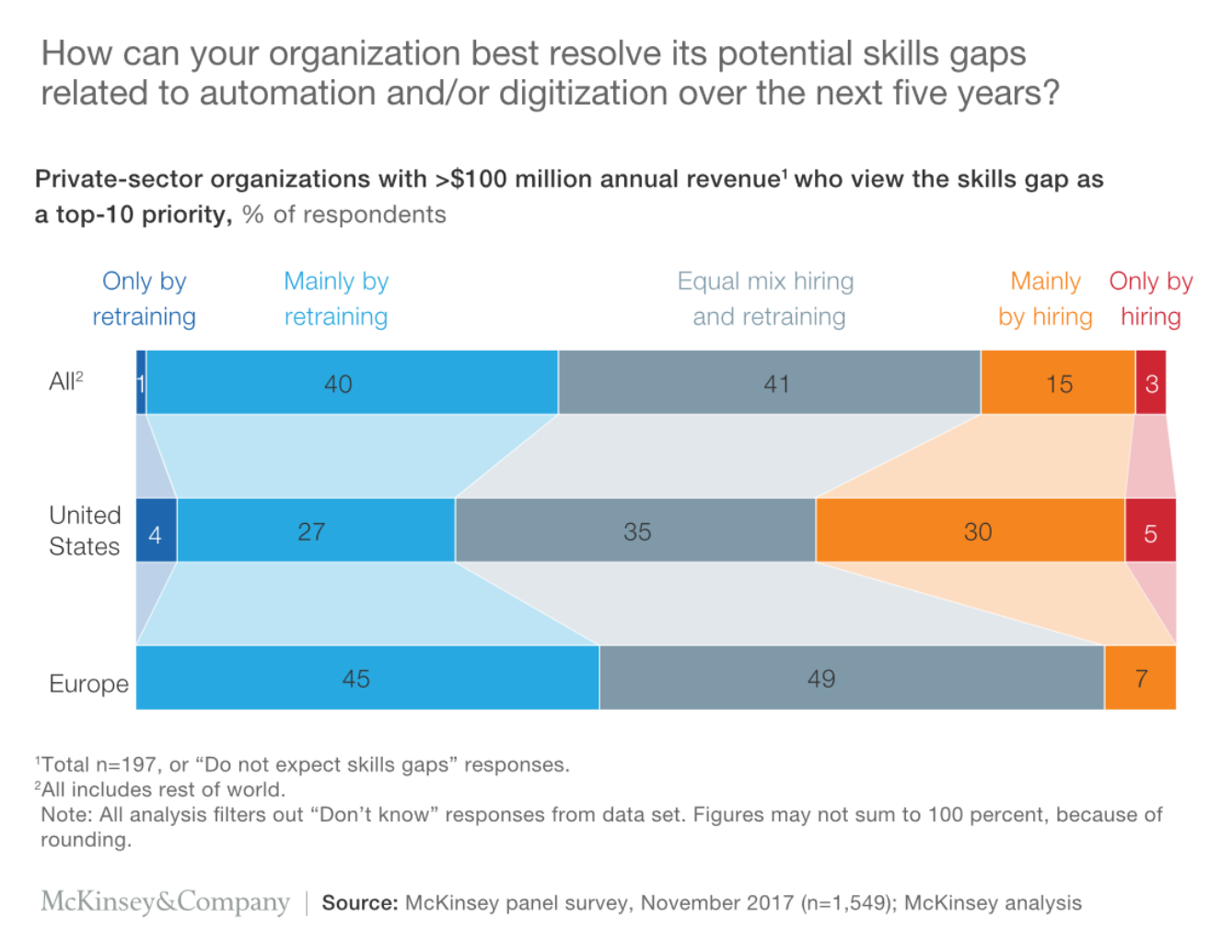CSPs have long tenured workers who possess deep tribal knowledge, but significant numbers are being lost through attrition. Doing more with less is a way of life in telecom operations.
As CSPs look to the future, they may view their existing workforce as something of a double-edged sword:
On the one hand, existing employees are typically loyal and long-tenured, and skilled in the ‘dark arts’ of traditional operations. Their knowledge and experience are not only invaluable, but in many cases essential for effective operational support of today’s infrastructure and services.
On the flipside, as new technologies, architectures and services are introduced, operational practices are becoming more IT-focused and IT-led. The skills required to manage and support the new environment are very different, and will make those of established employees obsolete(1).
(1) EY 2019 - Use Technology To Innovate
It’s comforting for us to imagine the natural comings and goings of employees will allow this transition of skills to occur painlessly, but sadly this is not the case:
As the qualification age for social security retirement benefits increases (along with life expectancy), employees expect to retire later(2). Early retirement is more prevalent in technology companies than in many other industries, but the trend is inexorably towards a longer working life.
(2) Bloomberg 2018 - Americans Retiring Later
The market for technology graduates is highly competitive, and it’s a struggle to recruit the numbers of young professionals needed to satisfy the evolving needs of the business(3). So even if a CSP is inclined to shed older staff, it’s not an easy matter to replace them with appropriately-skilled youngsters.
(3) CIO 2018 - The IT Skills Gap
Understanding the nuances of legacy systems and an established workforce
These effects increase the importance of CSPs finding ways to allow existing employees to continue making a useful contribution to the success of the company, despite the changes taking place. And adding further weight, it’s desirable because their ‘legacy’ experience is still valuable:
- For the foreseeable future, a ‘hybrid’ infrastructure including both old and new technologies will exist, as CSPs make the transition from traditional to new technologies. This hybridization has several forms… for example, NFV offers the possibility to incrementally virtualize specific components, in an environment initially dominated by traditional technology, while SDN offers a virtualized overarching framework for network management and operation, within which many lower-level traditional network components are incrementally virtualized. In both cases, there’s a need to blend old and new skills as the transformation proceeds.
- Even in the virtualized, software-driven, COTs-based, cloud-centric future of networks and services, there’s a lot of nuanced operational ‘cause and effect’ insight residing in the heads of the experienced staff, much of which is not documented or accessible in other forms. The intuition and experience of the workforce must be captured and harnessed to allow the emerging significantly more dynamic infrastructure and services environment to be configured, tuned and managed effectively… particularly as scale, complexity and required speed of reaction increase!
Age-related workforce dynamics:
- Skills and experience of older technology workers are becoming less relevant
- Retirement age is increasing alongside life expectancy and access to retirement benefits
- Competition exists for new graduates and other younger staff with relevant newer skills
- The natural recruitment/retirement cycle will not deliver the skills-shift needed fast enough
- Re-skilling and/or letting staff go are the only options to achieve the skills transformation
Existing expertise needs to be captured and CSP best practices enhanced
The end result is rather than replacing older employees, which would challenge social responsibility mandates in many organizations, there are many reasons why re-skilling to extend their useful participation is much the preferred option, as reflected in a McKinsey article originally published in November 2017 (McKinsey 2018 - Re-traing & Re-skilling in the Age of Automation):

In evolving to new infrastructure, the introduction of fresh operational practices and tools will be an incremental process. Existing expertise needs to be captured and best practices enhanced to speed up operational response times and lower costs to dovetail with the new approaches and systems being put in place. In both the old and the new technology environments, automation is key to allow effective management and operation.
Accenture (Accenture 2019 - Intelligent Technologies & the Workforce) notes that “73 percent of CXO respondents from our telco research sample were convinced that their organization would, to a large or very large extent, automate tasks and processes in the next three years”, but also includes the warning “While 96 percent of leaders surveyed expect the future workforce to be a blend of human and machines, they’re focusing more on immediate efficiencies than on transforming the workforce to take advantage of change”.




